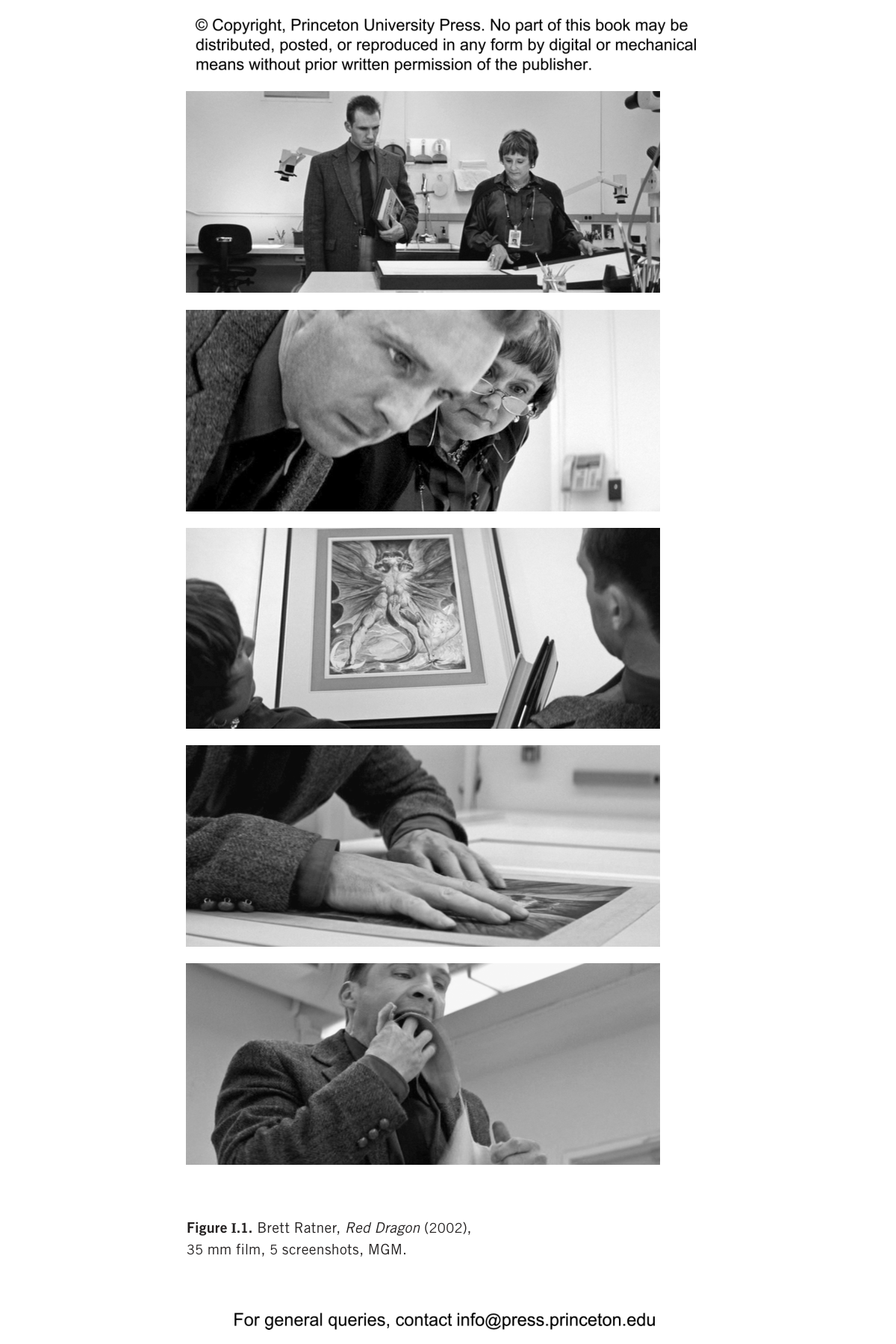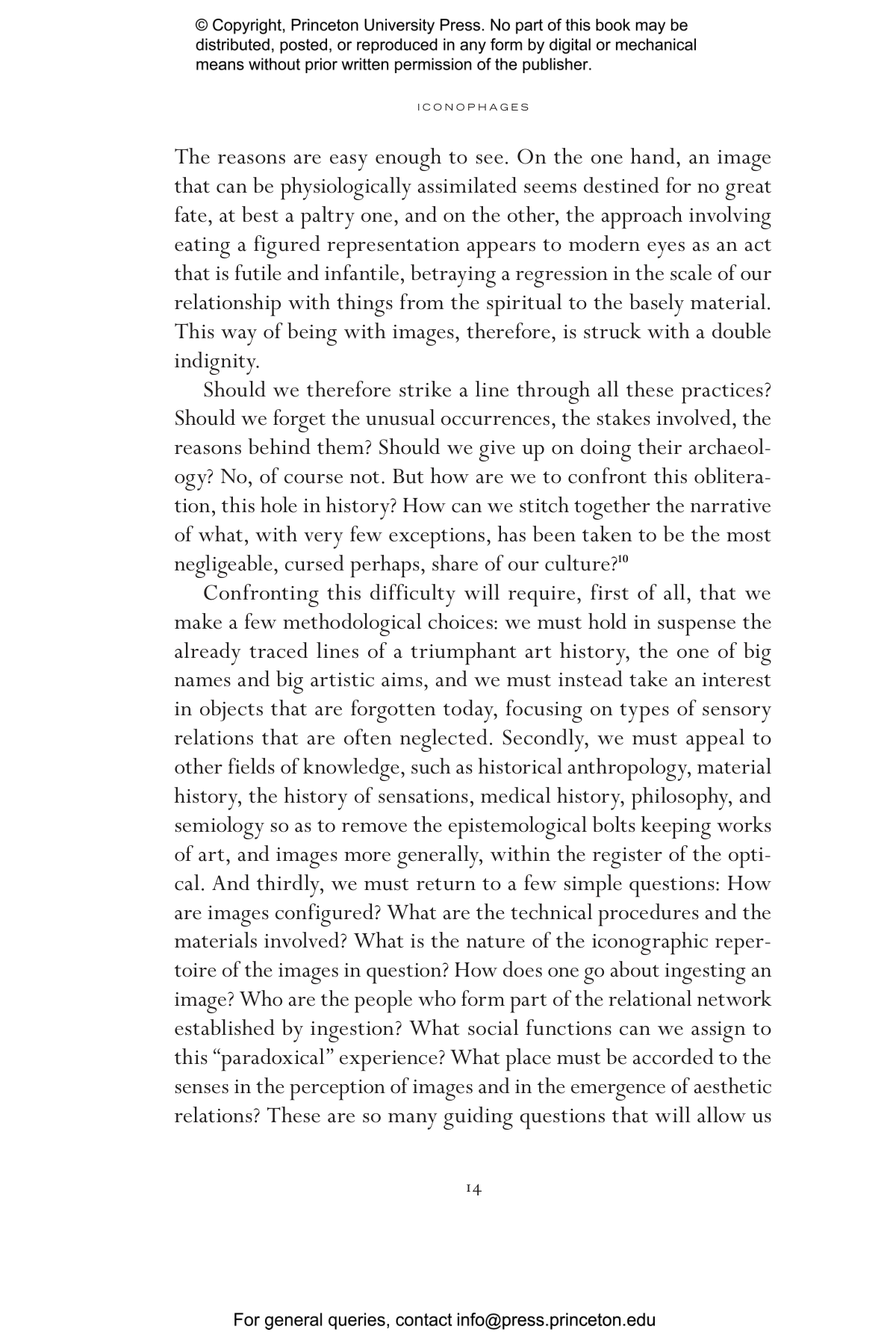Eating and drinking images may seem like an anomalous notion but, since antiquity, in the European and Mediterranean worlds, people have swallowed down frescoes, icons, engravings, eucharistic hosts stamped with images, heraldic wafers, marzipan figures, and other sculpted dishes. Either specifically made for human consumption or diverted from their original purpose so as to be ingested, these figured artifacts have been not only gazed upon but also incorporated—taken into the body—as solids or liquids.
How can we explain such behavior? Why take an image into one’s own body, devouring it at the risk of destroying it, consuming rather than contemplating it wisely from a distance? What structures of the imagination underlie and justify these desires for incorporation? What are the visual configurations offered up to the mouth, and what are their effects? What therapeutic, religious, symbolic, and social functions can we attribute to these forms of relations with icons? These are a few of the questions raised in this investigation into iconophagy.
Iconophages aims to retrace, for the first time, the history of iconophagy. Jérémie Koering examines this unexplored facet of the history of images through an interdisciplinary approach that ranges across art history, cultural and material history, anthropology, philosophy, and the history of the body and the senses. He analyzes the human investment, in terms of culture and imagination, at stake in this seemingly paradoxical way of experiencing images. Beyond the hidden knowledge unearthed here, these pages bring to light a new way of understanding images, just as they illuminate the occasionally outlandish relations we maintain with them.
Jérémie Koering is professor of early modern art history at the University of Fribourg. He is the author of Léonard de Vinci: Dessins et Peintures; Le Prince en représentation: Histoire des décors du palais ducal de Mantoue au XVIe siècle; and Caravage, juste un detail.
"Koering treats his subject with scholarly rigor without losing his visceral delight in its inherent bizarreness. The result is a unique and fascinating consideration of the meaning and power of art, food, and ritual."—Publishers Weekly
“This long-awaited transhistorical study of iconophagy is remarkable for its scope. With eloquence and erudition, Koering marshals an astonishing array of materials often seen as archaic, marginal, or primitive to demonstrate the ubiquity of image ingestion within the western tradition. Taking us far beyond the default ocularcentrism of art history, Iconophages engages current concerns with embodiment and materiality in a study with significant implications for the consumption and conception of images in and before modernity.”—Finbarr Barry Flood, Director of Silsila: Center for Material Histories and William R. Kenan Jr. Professor of the Humanities, New York University
“Iconophages is a tremendously entertaining book, an exploration of a permeable boundary that has developed between recent art history, anthropology, and religious studies, permitting histories that can encompass living images: images that speak, ‘operate,’ kill, and eat. After an opening look at Egyptian and Greek practices, Koering goes on a tour of edible images in Europe. He considers representations of Saint Catherine drinking blood (‘the best of sauces’ according to a sixteenth-century source) directly from Christ's wounds, the unappetizing Sicilian pastries called ossa dei morti (‘bones of the dead’), the idea of drinking the Virgin's milk, and iron presses for figured Eucharistic wafers.”—James Elkins, Chair of the Department of Art History, Theory, and Criticism, School of the Art Institute of Chicago
“Iconophages invites us to take a new and different look at the objects of art history. Far beyond our common understanding of images as primarily visual phenomena, Koering reveals a fascinating practice of touching, tasting, and ingesting images – from magical practices to modern art, from the sacred to the profane, from the natural to the supranatural world. Brilliantly written, this groundbreaking study combines the vividness of historical case studies with the lucidity of philosophical reflection. By opening up hitherto little-known aesthetic, religious, and cultural dimensions of visual artifacts, Iconophages makes a fundamental contribution to a comprehensive anthropology of the image.”—Peter Geimer, Director, German Center for Art History, Paris

































